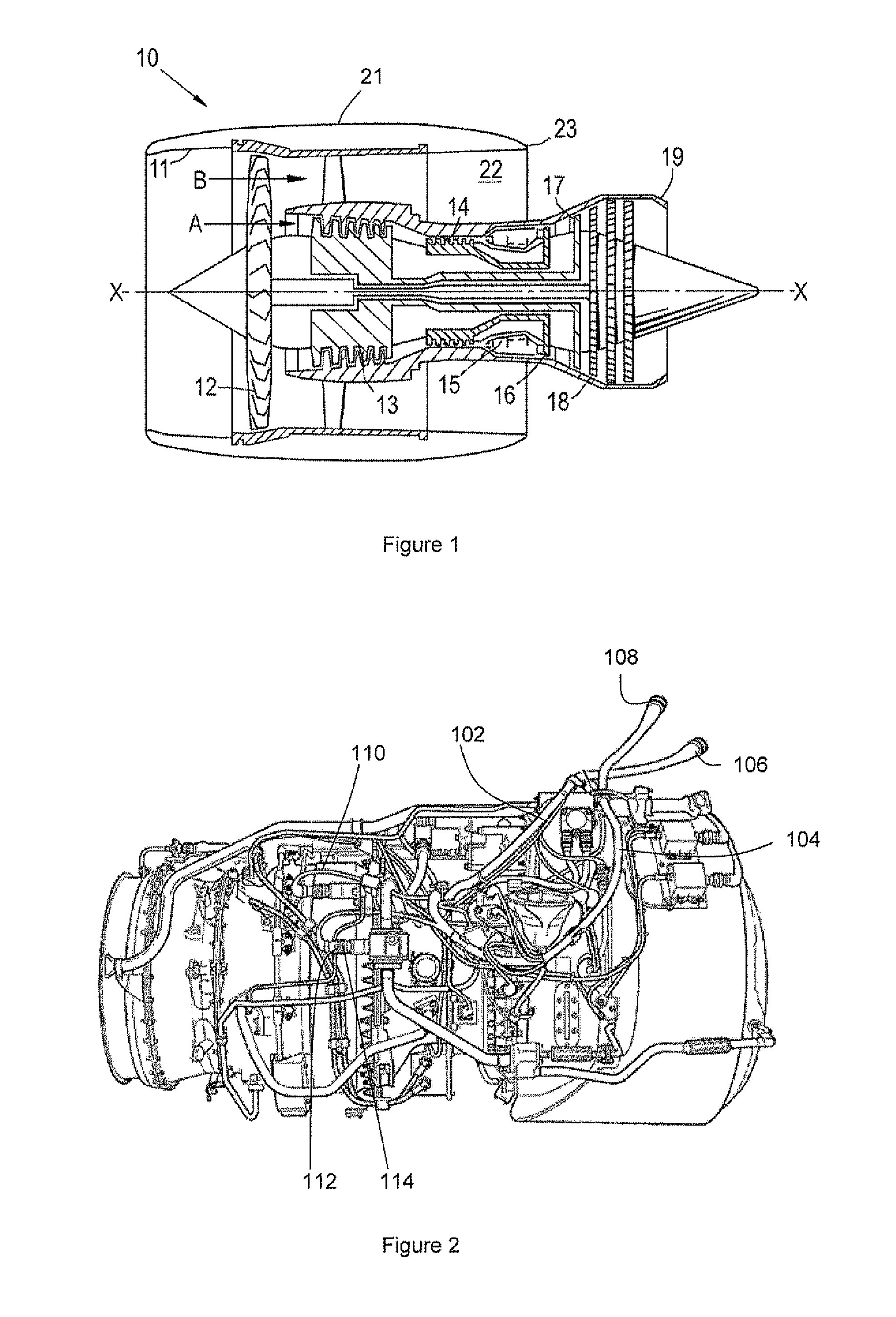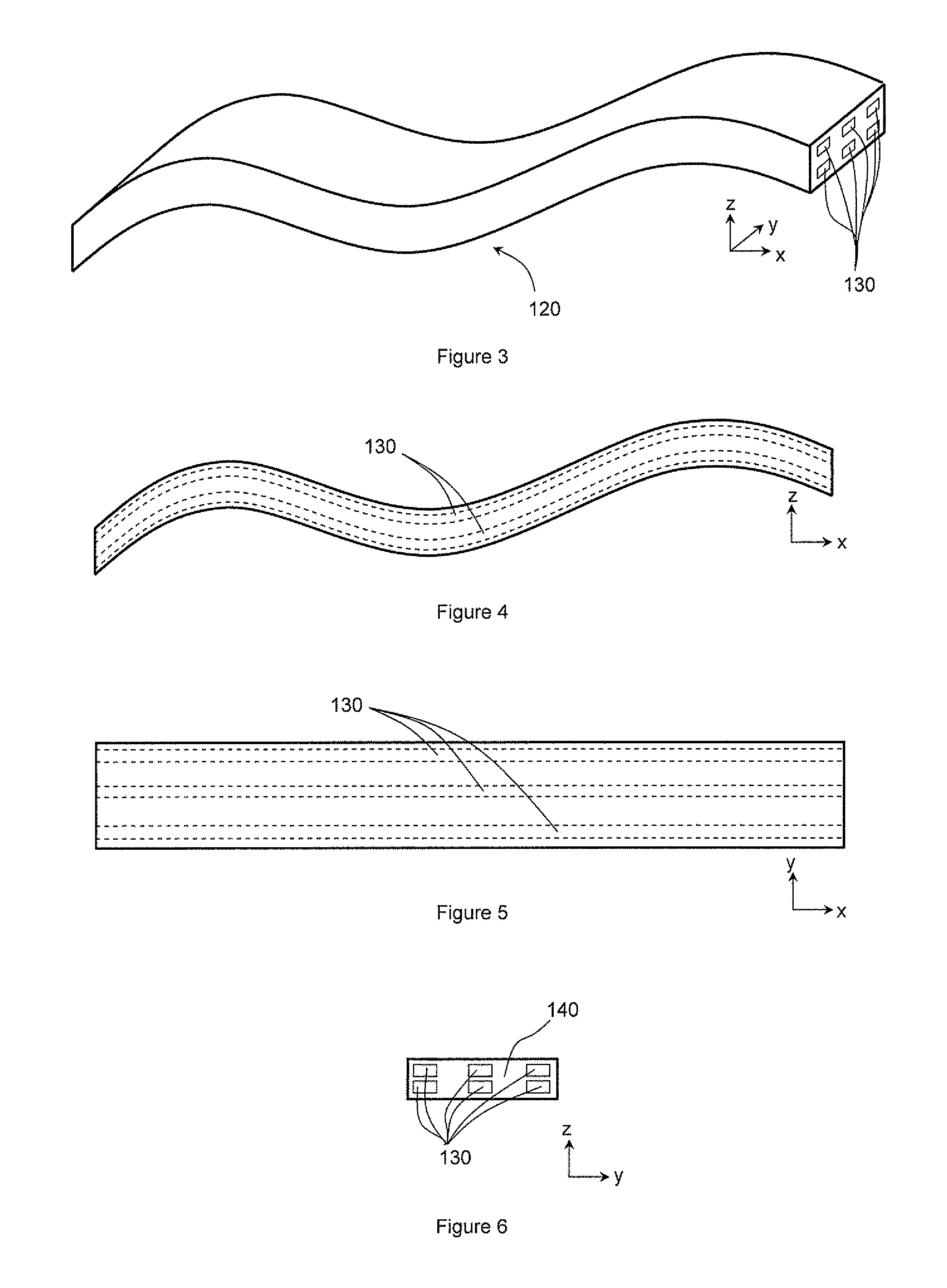Electrical harness
a technology of electrical harnesses and harnesses, applied in the direction of insulated conductors, cables, conductors, etc., can solve the problems of high voltage differentials, heavy and difficult to manipulate, bulky conventional harnesses, etc., and achieve the effect of avoiding excessive size, weight and cos
- Summary
- Abstract
- Description
- Claims
- Application Information
AI Technical Summary
Benefits of technology
Problems solved by technology
Method used
Image
Examples
Embodiment Construction
[0046]FIG. 7 shows schematically an arrangement of conductive copper tracks 201a, 201b in a transverse cross-section through an electrical harness formed from a flexible printed circuit board in which the tracks are in two track layers 203. The tracks are not grouped according to the relative impedances of the circuits which they form. Thus, during an indirect lightning strike, high voltage differentials can be induced between adjacent tracks of the same track layer. In particular, tracks 201a forming low impedance circuits, which are typically protected directly or indirectly to ground, remain at or close to ground potential, while tracks 201b forming high impedance circuits, which are typically allowed to “float” above ground, reach potentials of around 1500 V.
[0047]The distance L3 between adjacent tracks of the same track layer thus has to be relatively large to accommodate a potential difference of around 1500 V.
[0048]In contrast, FIG. 8 shows schematically a corresponding arran...
PUM
 Login to View More
Login to View More Abstract
Description
Claims
Application Information
 Login to View More
Login to View More - R&D
- Intellectual Property
- Life Sciences
- Materials
- Tech Scout
- Unparalleled Data Quality
- Higher Quality Content
- 60% Fewer Hallucinations
Browse by: Latest US Patents, China's latest patents, Technical Efficacy Thesaurus, Application Domain, Technology Topic, Popular Technical Reports.
© 2025 PatSnap. All rights reserved.Legal|Privacy policy|Modern Slavery Act Transparency Statement|Sitemap|About US| Contact US: help@patsnap.com



